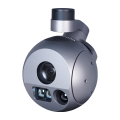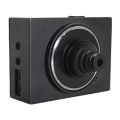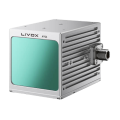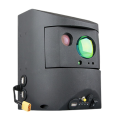- Start
- Critical infrastructure
- Roads
Solutions for road infrastructure
Our drone solutions can be used to quickly map and inspect critical road infrastructure.
By using precision mapping, workers in this sector can get a detailed picture of key road assets, while optimising tools and keeping their employees safe.
By using precision mapping, workers in this sector can get a detailed picture of key road assets, while optimising tools and keeping their employees safe.
Key benefits
for road infrastructure
Site planning and design
Mapping large work areas to capture detailed, precise data using drones. 2D maps and 3D models help teams optimise project planning and design.
- The lack of precise location data makes it difficult to align BIM designs, vector road maps and satellite imagery, costing time and labour.
- 2D designs are unable to depict the geospatial information required to fully visualise the design.
Drones improve planning
and road design
- Create 3D models with accurate positioning data that can be easily matched to BIM models to visualise designs.
- Projects can be optimised using drone-created 3D models that are compatible with various GIS software.
Monitoring progress
Drone solutions, along with image fusion and 3D modelling software, help keep teams fully informed of work progress and resource allocation – keeping projects on time and on schedule.
- It is difficult to keep track of road construction projects that are stretched over large sections and involve multiple teams.
- Permanently mounted cameras on site are unable to cover the entire site in depth, making them unable to capture critical information about the progress of the construction work.
- A large amount of video can drown out critical details, making it difficult to follow individual areas of a project.
Drones help to monitor progress on road construction
- Drones can create accurate 2D maps and 3D models of the area on demand.
- 3D models can be used to track dynamic changes or progress day by day.
Data collection
Collecting accurate data covering large areas using a variety of sensors and software.
- Road construction projects typically cover long distances, making site surveying and general data collection difficult and inefficient with hand tools run from the ground.
- Resource exploration requires a continuous stream of large-area data, and failure to obtain equipment status in a timely manner can result in inaccurate data and consequent project delays.
Drones improve data collection in road construction and maintenance
- Drones are flexible yet powerful. They can stay in the air for long periods of time, providing data on large areas in an efficient manner.
- They are used as often as necessary to monitor the status of construction equipment, resources and the status of raw material consumption, thereby ensuring the accuracy and integrity of the data collected at the management centre.
Topographic measurements
Rapid mapping and modelling of large areas using drones to obtain data for accurate 2D and 3D models.
- When a large amount of fieldwork is required, involving multiple teams and stakeholders. Project costs are high and schedules are long.
- Projects are often delayed due to inefficient data collection methods.
- Contour data is not part of the standard documentation, which causes difficulties in visualising the data.
Drones improve typographical data collection in road construction
- Generate a map at a scale of 1:500 without the use of GCPs, while meeting centimetre-level accuracy requirements.
- Highly efficient data collection and processing up to 10 times faster, efficiently obtaining results and shortening the project cycle.
- Obtain standardised output such as DOM, DSM, 3D reality models and more. Export data in geoTIFF, LAZ, GeoJSON, CSV and PDF formats.
Hybrid drone platform 
Dedicated accessories
for Inspector
and Enterprise models
Similar solutions
for critical infrastructure
for critical infrastructure


Follow us
Contact
-
+48 797 476 054
-
Al.Krakowska 110/114
budynek B-27
02-256 Warszawa










